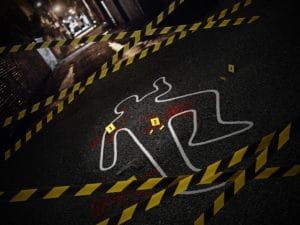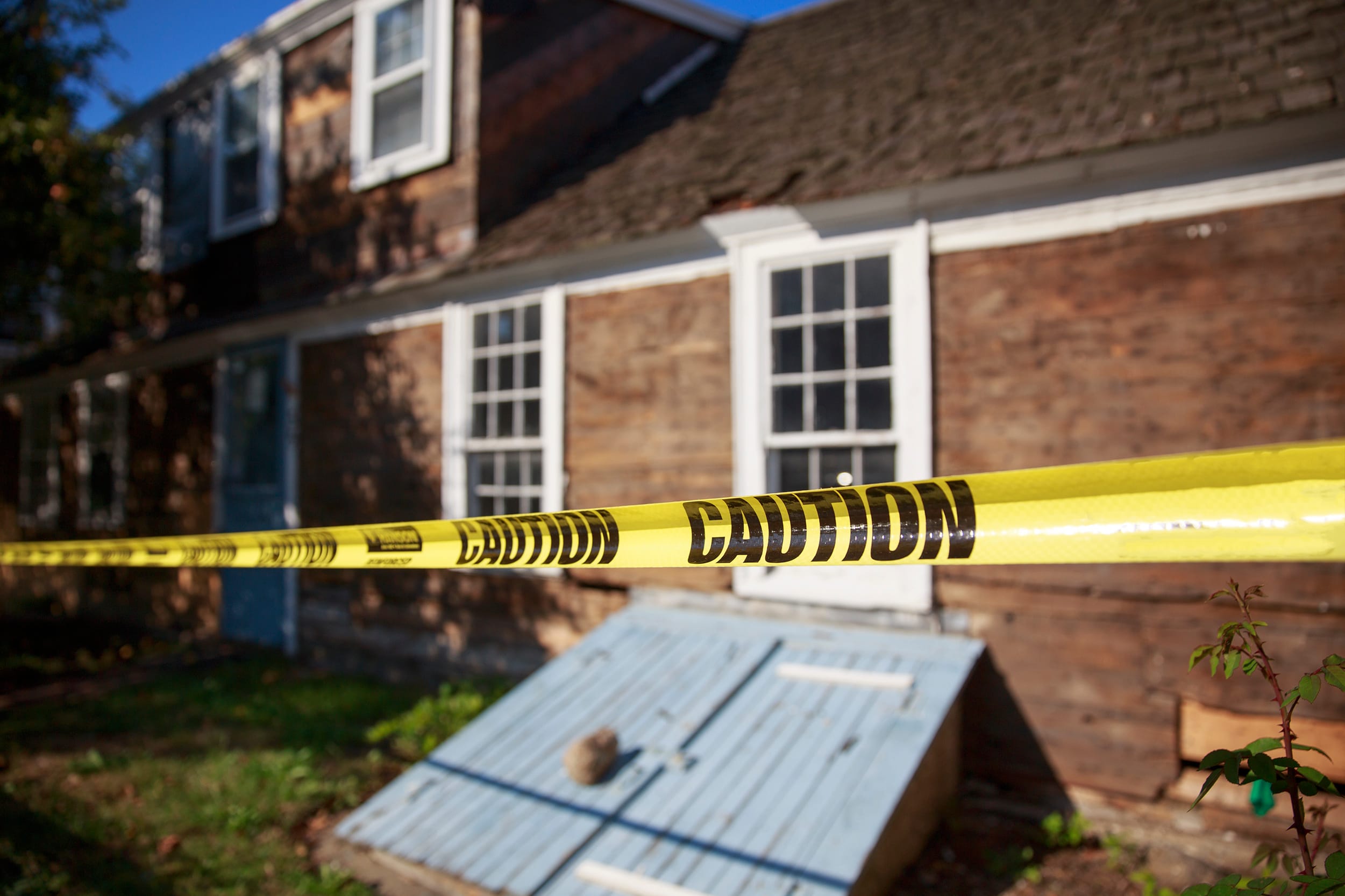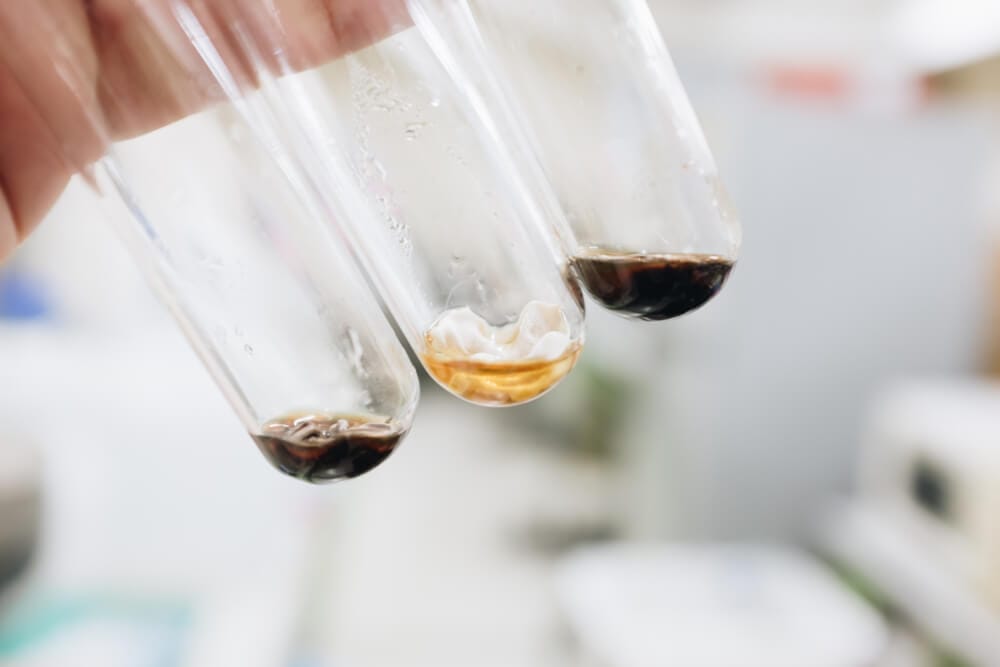When the average person hears the word biohazard they picture workers in hazmat suits and hazard tape. The majority of people do not fully understand what biohazards are and the requirements to perform a cleanup. The word biohazard is a combination of the words biological and hazard. This means any substance, item, or material that is biological and may create a health risk to animals or humans. When performing biohazard cleanup personal protective equipment (PPE) is necessary. We are going to explore the types of PPE worn by crime scene cleaners and what contamination risks workers encounter.
What Biohazards Do Crime Scene Cleaners Encounter?
Crime scene cleaners encounter a wide variety of biohazardous materials.
When clean-up crews arrive they must locate and collect all biohazards. They must dispose of these materials according to Occupational Safety and Health Administration (OSHA) regulations. OSHA also sets the requirements for wearing personal protective equipment. Crime scenes are full of both biohazards and disease. Cleanup crews risk exposure to things such as HIV, cholera, hepatitis, and tuberculosis. By the time investigators release the scene for clean-up, body fluids, blood, and human remains may have been in the building for days or weeks.
Here are things a cleanup crew is likely to encounter in their work:
Infectious Disease
Infectious diseases may be lingering in the air or on any surface of a crime scene. The crime scene cleaner must remove all biohazards and then clean and sterilize the air and all surfaces. To prevent contamination, it is imperative the worker wear full PPE at all times.
Blood
The most common biohazard crime scene cleaners encounter is blood. Blood is found in numerous areas including the floor, carpeting, cracks in the walls, furniture, and more. Other hazards found at cleanup locations include human waste, fungus, mold spores, industrial chemicals, and animal infestations.
Because blood is a primary carrier of infection, workers never remove their PPE gloves when at a scene. By wearing two pairs of gloves they have additional protection against contact with bodily fluids or punctures from items such as metal fragments, needles, and glass.
Odors
Most crime scenes contain a variety of bad odors. Crime scene workers have difficulty describing the repugnant odor produced by a decomposing body. By the time the cleanup crew arrives decomposition left behind by the body may have congealed and hardened on the surface where the body was found.
The impenetrable qualities of human scent and its ability to transfer and survive on objects are now being used in crime scene investigations. Human scent evidence canines are assisting investigators in solving cases.
The ability of dogs to track human scents shows how intense odor may penetrate a cleanup location. This is why workers wear PPE masks and respirators to help filter out odor and any toxins in the air.
Other Cleanup Scenes
Crime scene cleaners work in a variety of locations where no crime took place. This includes hoarding households, mold remediation, water damage restoration, accidental death, tear gas cleanup, coronavirus decontamination, and more.
These types of cleanups present workers with other types of hazards. They are likely to encounter rodent droppings, animal waste, and rotting food. They may also be subject to contamination from the several types of mold found in homes and buildings that are toxic.
The risk of exposure to a wide range of biohazards is why it is important for professional cleanup crews to wear PPE at each type of job they undertake.
What Are 4 Types of PPE?
There are various types of equipment that fall within the PPE meaning. This includes gloves, eye protection, safety helmets, hazmat suits, safety footwear, safety harnesses, earplugs, ear defenders, respiratory protective equipment, and high visibility clothing.
PPE equipment varies depending on the profession. The types of PPE in healthcare will be different from those used for crime scene cleanup. The main 4 types of PPE used by professionals cleaning a crime scene are:
Chemical Spill Boots
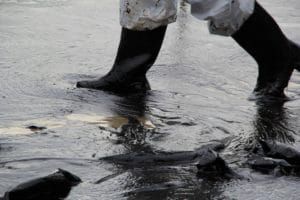
Because of the danger of having long or short-term exposure to chemical spills and biohazards, crime scene cleanup crews wear protective footwear. Chemical spill boots are made of material resistant to penetration by chemicals. It is important to look at the type of chemicals the worker will be exposed to and purchase footwear with a permeation rating for that type of contamination.
Instead of chemical spill boots, crime scene cleanup crews often use a bootie, also called a protective shoe cover. These allow the worker to put the protective gear on over their standard shoes. The bootie protects the shoes from contamination by biohazards.
Protective Suit
Crime scene cleanup crew members must wear a disposable full-body suit. This provides the worker with head-to-toe protection.
A hood covers the workers head and ears, the sleeves extend to the wrists, and the legs go down to the ankles. When exiting the crime scene, the worker removes the PPE suit and disposes of it in a special hazardous waste container.
Protective suits are available in a variety of fabrics depending on the type of cleanup. A suit made of a cotton/polyester blend is sufficient for physical hazards and general biological and chemical cleanups.
If the crime scene cleanup is in an area that includes corrosive or explosive chemicals, a flame-resistant suit is necessary. This includes meth lab locations. When cleaning up a meth lab, crews may encounter battery acid, solvents, and other toxins that flow like rivers on the ground.
This waste is highly flammable and explosive. One pound of meth will produce six pounds of toxic waste. This is why high-quality PPE is important when doing crime scene cleanups.
The chemicals found in a meth lab are corrosive, toxic, explosive, flammable, and possibly radioactive. These chemicals penetrate the walls, carpets, drapes, and furniture.
Disposable Non-Porous Gloves
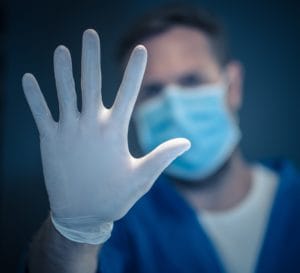
Disposable latex gloves are necessary when handling tissue and blood samples. These gloves protect against bloodborne pathogens.
When working at a crime scene, a pair of rubber gloves is placed on the worker and taped at the wrist. A second set of gloves may be placed over the first for additional protection.
Additional protection from puncture and abrasion is provided by disposable nitrile gloves. These offer a higher level of protection than a normal latex glove when handling chemical and biological material. If handling corrosive chemicals and flammable solvents a worker needs to wear rubber latex gloves.
Face Mask
To protect the eyes, nose, and mouth a face mask may be worn that includes filters. Filters keep the air clean and odor-free for the worker. Crime scene workers wear this gear at all times because of the horrible smell from a decomposing body.
A surgical mask protects a worker against splashing but does not effectively filter the air. When wearing an N-95 respirator, the worker receives protection from dust and other airborne particles.
Respirators filter out harmful airborne contaminants to prevent damage to the workers lungs and esophagus. Half-mask respirators provide protection against fumes, toxic chemicals, and disease. A full-face respirator gives the same protection plus eye and face protection.
Leave Cleanup to the Experts
When you need crime scene cleanup done at a location that may contain biohazards, the safest method is to have the experts at Spaulding Decon handle the process for you. Our services are available throughout the United States and professionals are available 24/7 by phone (866) 726-2316.
Call us today to speak with a cleanup professional. We will provide you with a quote estimate over the phone and send our crew to your location to begin the cleanup process.

